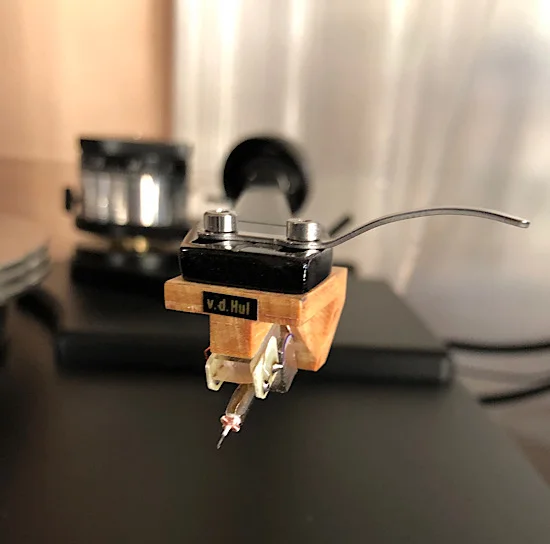Streaming the Classics 7/Mahler 9 Symphonies Box Sets
Do you ever type a streaming query in Roon for a classical work and are overwhelmed by the choices? Rather than clicking on any old recording or the first one you see, Audiophilia will make things a little easier for you and do the heavy listening.
These choices are for streaming only. Is the best in streaming also the best vinyl recording and performance? That’s for another article.
A few criteria:
Recording must be on both Qobuz and Tidal HiFi.
It does not have to be HiRes or MQA.
No more than ten recommendations in no particular order, then my top three for streaming in order of preference.
Here are nine box set Mahler Complete Symphonies I found on Tidal and/or Qobuz and very much enjoyed. I will list them below—no hierarchy intended. For your delectation, three conductors and their recordings will be selected at the end of this review as especially noteworthy.
Ricardo Chailly, Mahler: the Symphonies. Royal Concertgebouw Orchestra/Decca
Leonard Bernstein, The Complete Mahler Symphonies, New York Philharmonic/Sony Classics
Michael Gielen, Gustav Mahler Symphonie Nos. 1--9, Sinfonieorchester Baden-Baden und Freiburg/SWR-Music
Simon Rattle, Mahler: the Complete Symphonies, City of Birmingham Symphony Orchestra and Berliner Philharmoniker/Warner Classics
Claudio Abbado, Mahler 10 Symphonies/DG
Georg Solti, Mahler, The Symphonies, Chicago Symphony Orchestra/Decca
Rafael Kubelik, Mahler: Symphonies, Symphonieorchester des Bayerischen Rundfunks/DG
Bernard Haitnik, Mahler: The Symphonies and Song Cycles, Royal Concertgebouw Orchestra/Decca
Boulez, Mahler, Chicago Symphony Orchestra, Wiener Philharmoniker, The Cleveland Orchestra and Staatskapelle Berlin/DG
Let me begin, however, with a few general thoughts about Mahler and Mahler recordings.
It seems every conductor at the helm of a competent orchestra today records all the Mahler symphonies. It is a significant compliment to the musicians of the above noted orchestras that the level of technical proficiency and ensemble playing is as high as it has ever been in the history of orchestral playing. And the conductors who lead these extraordinary players have undoubtedly different strengths within the corpus of Mahler’s output, but create a clear idea of what they want from their players.
However, unlike so many of the new conductors, many of the older conductors were cautious as to what symphonies they performed and recorded. They tended to be much more selective. Klemperer wouldn’t touch the 6th. Wilhelm Furtwängler decried the same piece as “…the first nihilist work in the history of music”. And the great Bruno Walter saw Mahler’s 6th symphony as too dark for him to conduct, since it “…ends in hopelessness and the dark night of the soul”.
Only a few of the older generation of conductors recorded all of Mahler’s symphonies: Horenstein and Mitropoulos come to mind, Kubelik and Bernstein. Von Karajan recorded the 5th 6th and 9th; Barbirolli recorded all of Mahler, except the 8th. Once again, it takes an extraordinary musician and conductor to take a run at all of Mahler’s output. Those who do must enter the rarified air of a unique pantheon of saints and must do so with extraordinary vision and effort.
With this in mind, I’ve put all the above-mentioned orchestras through a detailed prism, through the listening lens if you will, of Mahler’s 6th. I will allude to a few other performances from my top picks, here and there, but I have listened especially to the recordings of our conductors’ interpretations of this symphony.
Why the 6th? Because it is his greatest orchestral symphony. I can hear the howls of disapproval with this statement, but I insist. [No disapproval, here as I love the 6th, but I’d like to throw my editorial hat in the ring with a resounding call for his extraordinary 9th as not only his finest symphony, but a serious choice for one the greatest of any composer’s symphonies—Ed].
Written at a time in his life when Mahler was at his happiest: he was at his height as a conductor, administrator and opera reformer; his music was gaining a slow but clearly recognized acceptance from audiences; and his marriage to the beautiful Alma brought them the joy of two beautiful daughters. Mahler was a happy man. And this happiness or contentment created an extraordinary work of art that ends in a deep existential despair, that Walter, Furtwängler and others were shocked to hear.
With the 5th Symphony, Mahler wrote a work of absolute music with an innovative form of integrative structure, but with the 6th, he writes his most avant-garde within the strict confines of the classical symphony, employing sonata form with an explicit repeat in the first movement and a very sophisticated level of motivic integration throughout three movements out of the four. No more implicit or explicit relationship to text as in his first four symphonies; no more “programmatic scaffolding” to help define form. Motivic themes at a sophisticated level within the classical symphonic form. Mahler’s maturity as a composer at his finest.
So now, dear reader, we come to my three choices. And thank you for allowing me this introduction.
Number One: Leonard Bernstein and the New York Philharmonic on Sony. Number Two: Rafael Kubelik and the Symphonieorchester des Bayerischen Rundfunks on Deutsche Grammophon and Number Three: Claudio Abbado and, in this case, the Chicago Symphony Orchestra on Deutsche Grammophon. With the little space I have left, let me jump into some detailed observations.
Bernstein’s performances are legendary. Right out of the gate, the pounding march rhythms in the opening of the first movement of the 6th, is given an ever so subtle accelerando with crescendo. Mahler asks for the crescendo but doesn’t assign an accelerando. The drive that Bernstein creates, however, with this modest accelerando is extraordinary, an energy that sweeps the listener along and illuminates the power of the A minor opening without losing any clarity in the accompaniment.
The beautiful 2nd theme, the so-called Alma theme in F major, is Bernstein at his best. There is a deliberateness in the first 4 notes of the theme, the pick-up notes, that is unequalled. Some may hear a maudlin theatricality and unnecessary “exceptionalism” to this entrance, but for me Bernstein’s direction to the music is nothing short of extraordinary. It should be noted, Bernstein inherited a New York Phil from Mitropoulos who knew Mahler. The greatest recording of the 6th is the “live” 1955 recording by Mitropolous and the New York Phil, and I do mean the greatest. Bernstein continued the Mitropolous energy and developed his own stunning interpretations of Mahler’s works. But the energy remained.
Listen to the great recording of Mahler’s 3rd Symphony by Jascha Horenstein and the London Symphony Orchestra and then listen to the final movement conducted by Bernstein. Bernstein is in that rare pantheon level of conductors that can translate Mahler’s endless Adagio as one of the greatest of all final movements ever written.
Abbado and the majesty of the Chicago orchestra create a less riveting opening to the first movement and a less theatrical entrance to the second theme, delivering, nonetheless, a beautiful art-filled sound. Abbado is the superb musician, exhibiting control and good sense in his conducting, without too much fuss. Sometimes almost too much good sense. In the Finale of the 6th, Abbado stifles the Hammer blows and the “pastoral” entrance of the cowbells, showing good balance in the orchestra, but, once again, just a little too much control for my taste. The cowbells heard first in the opening movement, produce a pastoral longing, a world of innocence and indeed, isolation, but not existential isolation, that is brought back again in the final movement. The cowbell’s entrance is a reminder of a nostalgia with which Mahler must have felt his world was losing touch. The bells have no motivic significance, but as a brief soundscape, they are extraordinary to hear. I wish they had more prominence in Abbado’s interpretation.
In addition, the demonic Major-minor trumpet triad that concludes the Finale of the 6th with its punctuating and puncturing march-like rhythm in the timpani; this, too, is kept under tight control. We are suitably moved, but there is no “shock and awe” here. On balance, though, Abbado pulls from his orchestra a superb sense of musicality and balance that is the hallmark of a great musician. Mahler with a refinement.
Kubelik and the Bayerischen Rundfunks Symphonie Orchester bring a rhythmic vitality to sections of the first movement that are “Solti-like” in intensity. Although Maestro Solti is not in my top three, never have I heard such rhythmic clarity and “dryness” in the transition and accompaniment parts as in Solti’s recording of the 6th. This ‘dryness’, this rhythmic precision is an attribute. No doubt years of playing percussion in the NBC Symphony Orchestra, hearing Toscanini scream “sec”, created an appreciation for how rhythms can “pop” out at the listener. Kubelik comes close to this type of rhythmic vitality.
Kubelik takes the opening of the first movement at about 130 per quarter note, a healthy clip. And where Kubelik intuitively feels a necessary movement and momentum in the music, he presses the accelerator. Mahler’s scores are replete with detailed minutiae. But a great conductor knows when to adhere and when to, let us say, take liberties. At rehearsal number 43 of the first movement in the Dover edition, Mahler writes, “von hier zum Schluss etwas drangend”--“from here to the end somewhat urgent”. Unlike Chailly whose tempi and momentum tend to drag for me, although allowing the Concertgebouw’s depth of sound to be admired by this reviewer from one bar to the next, Kubelik does what Mahler wants, in spades; and that sense of urgency he brings is like a runner finding speed and endurance in the final 10 seconds of a race-----utterly exhilarating!
So, there we are my friends, no winners or losers, just great conductors conducting great orchestras, all to give us their best and to bring the best out of Mahler’s music. How lucky are we that we can sit back and ingest such music played so well. Taken on balance, I would recommend the Bernstein, Kubelik and Abbado Box sets. But, within Mahler’s great output, just as the great man described his music as “the world”, so too we are blessed to have all of these fine musicians interpret this genius’ world for us. And for this, we are so grateful.
Merry Christmas and God Bless.











